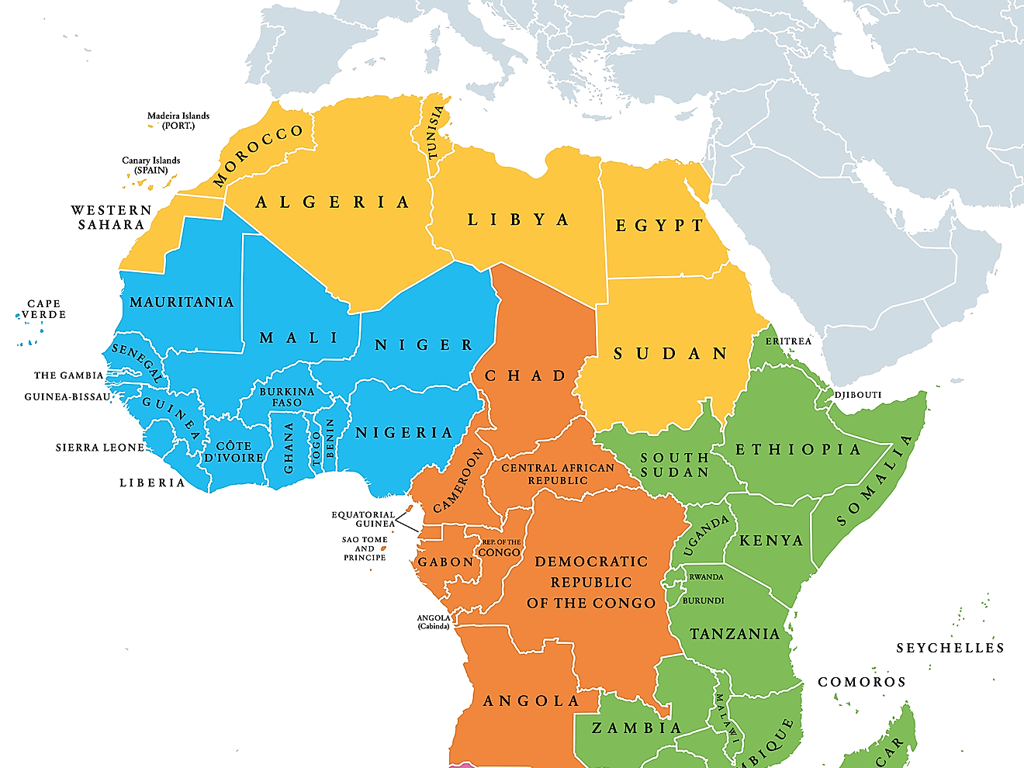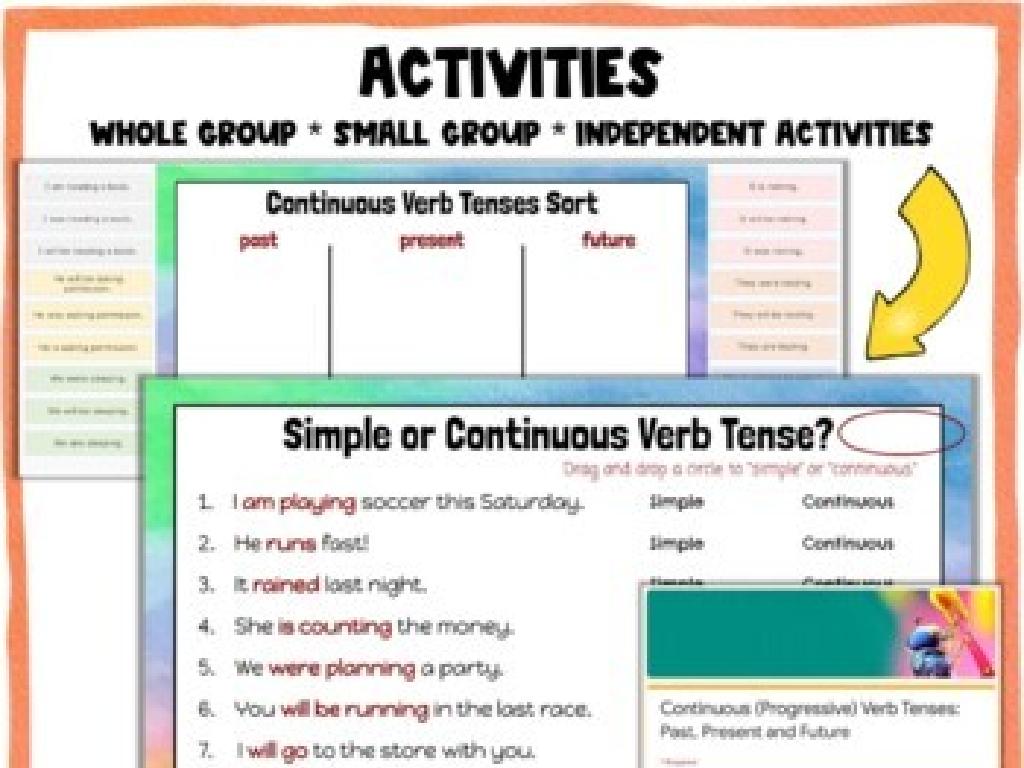Analyze Data To Compare Properties Of Planets
Subject: Science
Grade: Seventh grade
Topic: Astronomy
Please LOG IN to download the presentation. Access is available to registered users only.
View More Content
Exploring Planetary Properties
– Our solar system’s layout
– Defining planetary properties
– Size, composition, atmosphere, and orbit are key properties.
– Methods to compare planets
– Use of charts, graphs, and models to visualize differences.
– Analyzing data for comparison
– Look at real data to see how Earth compares to neighbors.
|
This slide introduces students to the concept of comparing planetary properties within our solar system. Begin by discussing the layout of the solar system to provide context. Explain the various properties that can be compared, such as size, composition, atmosphere, and orbital patterns. Teach students how to use different tools like charts and graphs to compare these properties effectively. Finally, engage them in analyzing real astronomical data to understand how Earth is similar to and different from other planets. This will help them appreciate the diversity of our solar system and the uniqueness of our home planet.
Exploring Astronomy: Our Window to the Universe
– Astronomy: study of celestial bodies
– Examines objects like stars, planets, and galaxies
– A major branch of natural science
– Explores the physical laws of the universe
– Tools astronomers use
– Telescopes, probes, and space missions gather info
– Understanding planets through data
– Analyzing data to compare planet properties
|
Astronomy is a fascinating field that allows us to explore the vastness of space and understand the universe beyond our planet. It’s not just about stargazing; it’s a rigorous science that examines the composition, motion, and other properties of celestial objects. Astronomers use various tools, including telescopes and space missions, to collect data. For today’s lesson, we’ll focus on how this data helps us compare and contrast the properties of planets in our solar system and beyond. Encourage students to think about how different each planet is and what factors might contribute to those differences. This will set the stage for deeper discussions on planetary science and the importance of data analysis in understanding our place in the cosmos.
Our Solar System: A Family of Diversity
– The Sun: Our Solar Anchor
– The Sun is the center of our solar system, providing light and heat.
– Planets: Varied and Unique
– Each planet has distinct features like size, composition, and atmosphere.
– Understanding Orbits
– Orbits are the paths planets take around the Sun, shaped by gravity.
– Moons and Rings: Planetary Accessories
– Many planets have moons and some have rings, adding to their complexity.
|
This slide introduces students to the basic structure of our solar system, emphasizing the diversity and characteristics of its components. The Sun is the central star, vital for life on Earth. The planets, each with unique properties, offer a rich field for comparison and analysis. Discuss how orbits are determined by gravitational forces and how moons and rings contribute to the individuality of planets. Encourage students to think about these celestial bodies not just as distant objects, but as part of a complex and interconnected system. This will set the stage for deeper exploration into the data analysis of planetary properties.
Comparing Planetary Properties
– Planet sizes vary widely
– From tiny dwarfs like Pluto to massive gas giants like Jupiter
– Planets: Rocky vs. Gaseous
– Earth is rocky, while Jupiter is gaseous
– Atmospheric differences
– Mars has a thin atmosphere, Venus has a thick one
– Temperature variations
– Mercury is scorching, while Neptune is frigid
|
This slide aims to give students an overview of the diverse properties of planets in our solar system. Size can range from small dwarf planets to the enormous gas giants. Composition is another varying factor, with planets like Earth being rocky, and others like Jupiter being composed mostly of gas. Atmospheres also differ, with some planets having very thin atmospheres and others having very thick, dense ones. Temperature is another property that varies greatly, influenced by factors such as distance from the sun and atmospheric composition. Encourage students to think about how these properties might affect the possibility of life on these planets. This comparison will help students understand the diversity of celestial bodies and the factors that influence their characteristics.
Data Analysis in Astronomy: Planetary Properties
– Understanding Data Analysis
– It’s the process of inspecting and interpreting data to gather information.
– Tools for Astronomers
– Telescopes, software, and space probes help gather data on planets.
– Interpreting Planetary Data
– Analyzing data like size, composition, and orbit to understand planets.
– Comparing Planetary Characteristics
|
This slide introduces students to the concept of data analysis within the field of astronomy, specifically focusing on how it applies to studying planets. Data analysis is a critical skill that involves examining and making sense of collected information. Astronomers use various tools, including telescopes and specialized software, to collect data on planetary properties such as size, composition, and orbital patterns. Students will learn how to interpret this data to compare and contrast different planets. Emphasize the importance of data analysis in making scientific conclusions about celestial bodies. Encourage students to think about how these tools have evolved over time and how they have expanded our understanding of the universe.
Comparing Planetary Properties
– Compare Earth and Jupiter’s mass/size
– Earth is smaller and less massive than Jupiter.
– Venus vs. Mars surface conditions
– Venus has a hot, dense atmosphere; Mars has a thin, cold one.
– Earth vs. Saturn’s atmosphere
– Earth’s atmosphere is rich in nitrogen and oxygen; Saturn’s is mostly hydrogen and helium.
– Analyzing data for comparison
|
This slide aims to help students understand how to analyze and compare different properties of planets. Start by comparing the mass and size of Earth and Jupiter, highlighting the vast differences due to Jupiter’s status as a gas giant. Discuss the extreme surface conditions of Venus, with its runaway greenhouse effect, and contrast it with the cold, desert-like surface of Mars. Compare Earth’s life-supporting atmosphere to Saturn’s gas composition, emphasizing the importance of atmospheric makeup in determining a planet’s habitability. Encourage students to think critically about how these properties affect the potential for life and the overall structure of our solar system. Provide data tables or graphs for students to analyze these planetary properties quantitatively.
Activity: Planetary Detectives
– Collect data on two planets
– Analyze planetary properties
– Look at size, atmosphere, temperature
– Compare and contrast findings
– Note similarities and differences
– Present to the class
|
In this class activity, students will act as planetary detectives to gather data on two planets of their choice. They should focus on analyzing key properties such as size, atmosphere, and temperature. Students will then compare these properties to understand the similarities and differences between the two planets. Encourage them to use credible sources for their research. Possible activities include creating a Venn diagram to visualize comparisons, a presentation with visuals, or a written report. The goal is for students to practice their analytical skills and present their findings in a clear and concise manner to the class.
Class Activity: Create Your Planet
– Design a unique planet
– Choose size and composition
– Is it rocky like Earth or gaseous like Jupiter?
– Determine atmosphere and temperature
– Is it thick with greenhouse gases or thin and breezy?
– Discuss life adaptation on your planet
– Would it be hot like Venus or cold like Mars?
|
In this engaging class activity, students will apply their knowledge of planetary properties by designing their own planet. They should consider factors such as size, which could range from a small rocky planet to a large gas giant, and composition, which might include elements like water, iron, or helium. Students must also decide on the type of atmosphere their planet has, which will affect temperature and potential life forms. Encourage creativity in how they envision life adapting to the conditions on their planet. Possible activities: 1) Draw the planet and label its properties. 2) Write a short story from the perspective of a creature living on the planet. 3) Create a fact sheet comparing the student’s planet to a real one. 4) Discuss as a class how different properties affect the ability of a planet to support life. 5) Have students present their planets and explain their design choices.
Conclusion & Reflection: Planetary Properties
– Recap of planetary characteristics
– Application of planetary knowledge
– Understanding planets helps in space exploration and science careers.
– Encourage questions and curiosity
– What questions do you have about planets or space?
– Reflect on today’s learning
– Think about how the lesson connects to the wider universe.
|
As we wrap up today’s lesson, we should revisit the key characteristics of planets we’ve discussed, such as size, composition, and orbit. Students should be encouraged to think about how this knowledge could be useful in real-world contexts, like space exploration or even in future scientific careers. Open the floor for any lingering questions or curiosities the students may have, fostering an environment where inquiry is welcomed. Finally, encourage students to reflect on what they’ve learned and how it fits into the broader picture of our understanding of the universe. This reflection helps solidify the knowledge and makes the learning experience more meaningful.






